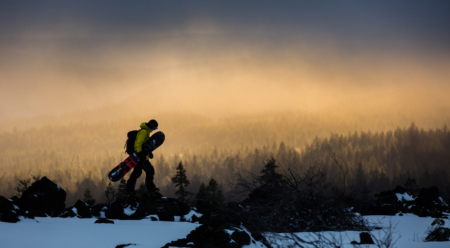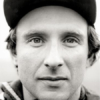The Cascadian Rhythm: Splitboarding Oregon with Josh Dirksen
“I just want to stay home and ride wind lips,” Josh Dirksen says. A simple statement. A simple goal.
It was April 2014. We’d been camped out on Central Oregon’s South Sister for a couple of days. Getting to our midmountain camping spot had taken some time, but not a lot of nerve. It was a casual splitboard approach, with the novelty of fat bikes instead of snow machines for the groomed 10-mile approach from Highway 372. We’d then carved out a home base in the deep spring snowpack on the south side.
Amid deep-water runnels formed by heavy rains, we spent three nights exploring the surrounding area, with Dirksen noting changes in the snow formations from what he’d seen earlier in the season. We barely scratched the surface, but found a few nice gullies to ride.
It was a new beginning for Dirksen, who lives in Bend, Oregon, and was raised in the nearby town of Creswell. A snowboarder since his teens, he’d become familiar with predictable global migrations each winter. Traveling for him meant adventure, progression and productivity. Home was just a place to unwind. Now pushing 40 years old with a wife and young child, he wanted to slow the pace.
“I started traveling an incredible amount the moment I committed to snowboarding as a career,” Dirksen says. “I was always running away from where I grew up, from Oregon. When I’d come home, I’d ride wind lips, and it felt unique. It felt like my best riding.”
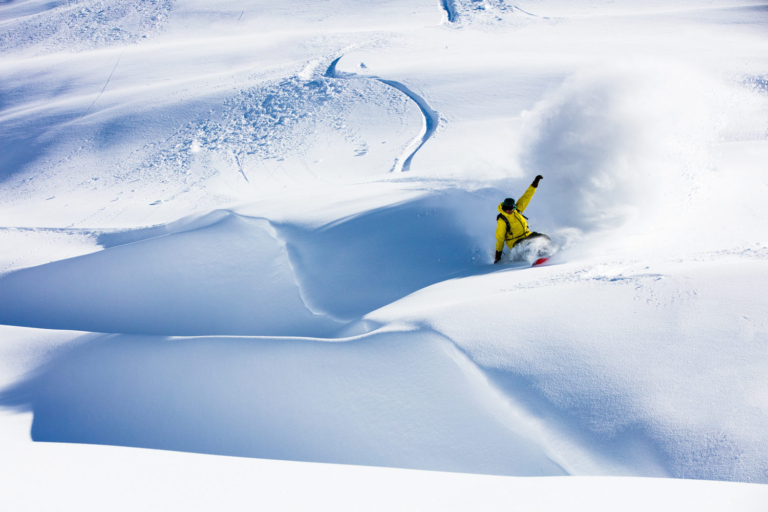
Blowing it up. The volcanic contours of Mount Bailey, Oregon, played host to Dirksen’s wind lip mission. Photo: Tyler Roemer
Over the past 20 years, Dirksen has spent more than six months of each year on the road. During the winter of 2015-16, he decided to stay exclusively in Oregon. It was a bold decision, but one aided by a strong snow year in the Pacific Northwest and Dirksen’s peculiar fixation: wind lips. Wind lips are wavelike snow formations created when the wind blows from a single direction. They are usually found along the edges of gullies and bowls. Central Oregon is the kind of place where volcanic landscape and high-plateau winds create an abundance of these features. Dirksen is a product of this environment.
“My snowboarding has always been influenced by Oregon,” Dirksen says. “The cement skate parks, the cold ocean waves and the natural terrain at Mount Bachelor have all affected my style. I learned the benefits of generating speed from the skate parks, the rhythm and flow from surfing the waves, and the possibility of bringing all three sports together while snowboarding at Mount Bachelor. Wind lips are really similar to a skate park in that you’re searching for speed. You’re not just dropping in and letting gravity take over. I wanted to find that flow state.”
Dirksen dedicated the winter to seeking new wind lips via splitboard—a task easier said than done. Like ocean waves, wind lips are constantly changing due to local weather patterns.
“They don’t last forever,” Dirksen says. “You could show up on one day and there’s nothing there, and then you can show up on another day and there’s huge wind lips that are perfect and beautiful and dreamy, and so fun to ride. During a snowstorm with strong winds, they’ll build up, and then when the sun comes out, they fade back down. Their glory moment is right after a storm.”
The method is simple but requires grit and patience. Get out in the mountains while the storm is still in progress, set up camp, and then, hopefully, wake up to sunshine and a changed landscape.
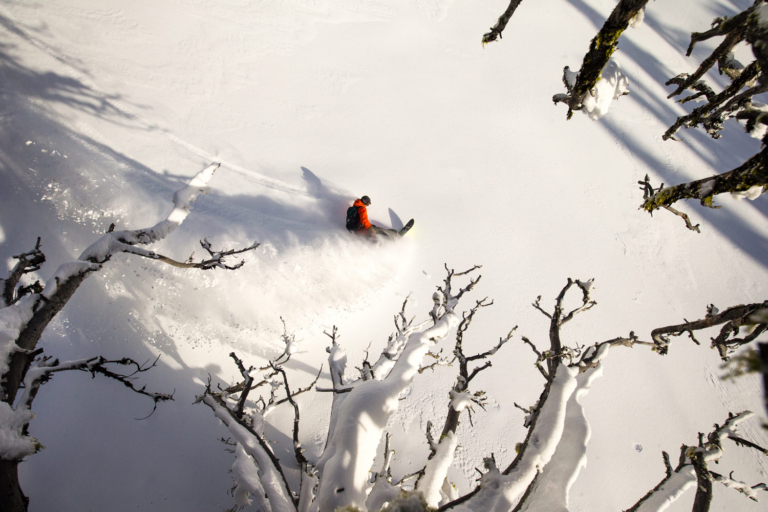
Josh Dirksen takes his turn from a different point of view than most. Photo: Tyler Roemer
“I see those wind lip lines, and they’re so beautiful to look at and so fun to ride,” he says. “This year, we just began to scratch the surface of what’s out there. Now, exploring the mountains close to home is a lifelong goal. It’s only going to get better.”
So often we’re led to believe that the only way to expand our horizons is to travel the globe. But by staying home, Dirksen was able to experience his home range in a new way.
“I realized that the idea that you need to travel in order to find quality snowboarding is like Coca-Cola convincing everyone they need to buy bottled water to stay healthy,” Dirksen says. “It’s easy to forget that you already have that water in your tap, when the media is constantly telling you otherwise. This year, I didn’t travel more than two hours from my house.”
It’s a decidedly different kind of adventure from that which is usually found in modern snowboard media. There’s little need for an ice axe, crampons, ropes, 3 a.m. “alpine” starts or anything resembling an expedition. It’s the kind of exploration that doesn’t require a lot of resources and is accessible to anyone with backcountry knowledge and a will to explore. It allows for a kind of snowboarding that, as long as you have done your diligence with terrain choices relative to weather and avalanche conditions, lets one move past the prospective perils of backcountry travel and focus on a different kind of puzzle: deciphering rolling volcanic terrain in a way that provides exciting and fun snowboarding and an easy sense of adventure.
“The world of snowboarding has become so extreme, your femur’s gonna break in half if you don’t land the jump, or you’re dropping into a line with a decent chance of an avalanche,” Dirksen says. “I’ve had a lot on my mind with my family these last couple years, and I’m not searching for more worries.”
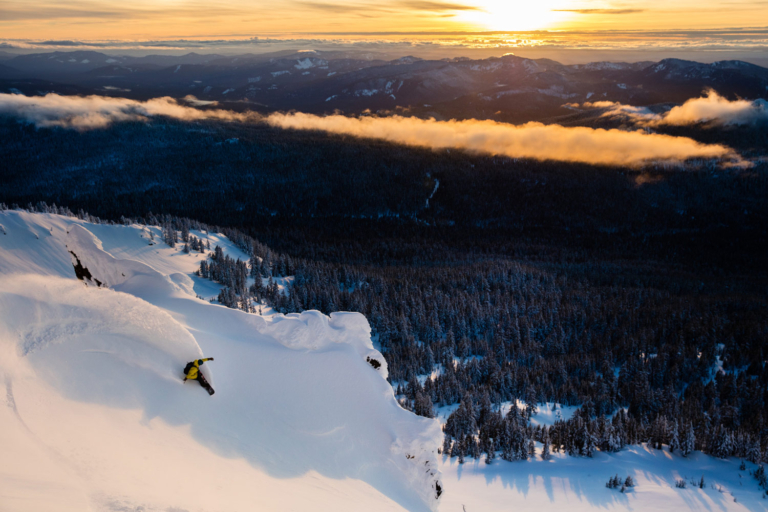
Sometimes, all that’s needed to shake things up is a good directional change. Mount Bailey, Oregon. Photo: Tyler Roemer
At season’s end, Dirksen and friends explored 10 different Oregon mountains, from the lava cone of Mount McLoughlin down south to the iconic Mount Hood to the north. While riding was the goal, the reward was made so much greater by pursuing a vision that is unique to the person and place. They found a volcanic landscape largely devoid of other humans—and often populated with wind lips as far as the eye can see. They found a fresh Cascadian rhythm in Dirksen’s own backyard.
This story first appeared in the 2017 Patagonia Mountain catalog.
